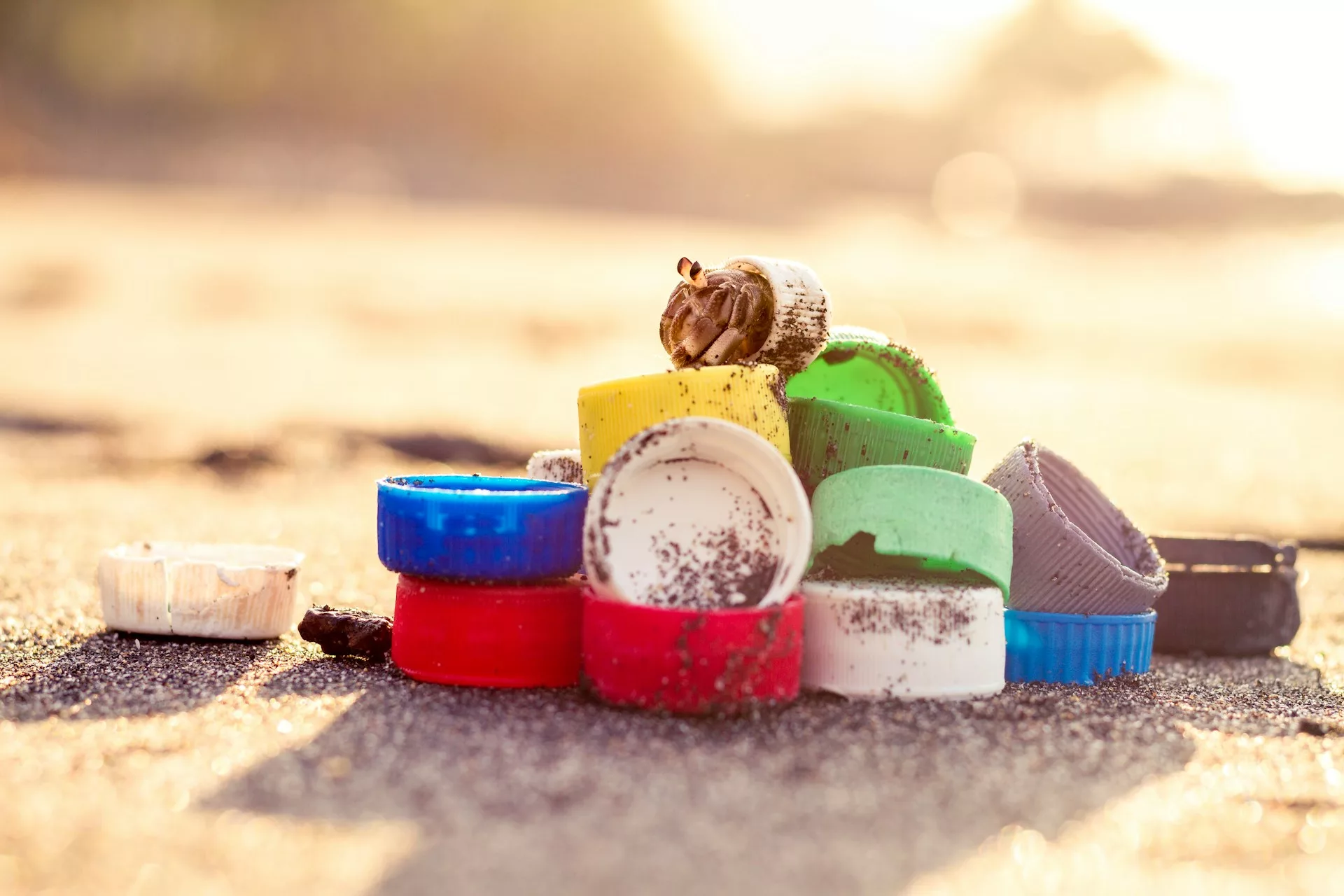Our plastic waste that has ended up in oceans is being co-opted by certain crab species as their shells. Photo credit: Mark Harpur via Unsplash
There’s no place like home, but for hermit crabs that naturally use shells for shelter, plastic is increasingly being used as a replacement. By analysing images posted on social media, a new study has found that ten out of sixteen of the world’s species of terrestrial hermit crabs are now using artificial shells (predominantly bottle caps). These species span every tropical coast, highlighting how plastic pollution is affecting the natural world.
…ten out of sixteen of the world’s species of terrestrial hermit crabs are now using artificial shells…
Hermit crabs are a widespread group of crabs that usually inhabit discarded sea snail shells. The shells provide protection from predation and desiccation (loss of moisture) and are consequently crucial for the crab to be able to survive and go on to reproduce.
Focusing on Coenobitidae (terrestrial hermit crabs, which spend their adult lives on coastal land, although they have a marine phase as larvae), the researchers took a new approach to data collection: iEcology. Coined in 2020, this term refers to using online platforms as a data source to investigate the natural world. In this case, the researchers gathered pre-existing images of crabs using artificial shells from social media platforms, often posted by users wanting to highlight the impacts of pollution on the natural world. With just four previously published studies describing hermit crabs using anthropogenic objects as shells, iEcology allowed the researchers access to a much wider scope on this issue, achieving findings that are globally relevant by bringing together photos taken across the world.
Plastic was the most common human material used by these crabs (making up 85%, and largely consisting of black or white bottle caps), but metal and glass objects were also recorded as being used. Although the figure may be inflated by plastic objects being easier to spot on the beach than glass or other materials that might blend in with the natural surroundings, leading to more people posting these photos, this highlights plastic as a central culprit.
Plastic was the most common human material used by these crabs…
Marine plastic pollution is not news. 85% of marine waste is plastic, with between 75 and 199 million tonnes currently circulating in the oceans. This corresponds to roughly 25 kilogrammes (equivalent to around 360 500ml plastic bottles) per person on the planet. Larger pieces of plastic pose a threat of entanglement whilst smaller pieces (including microplastics) can be ingested with toxic effects. Most plastic waste enters the oceans from rivers, concentrating this issue around coastlines, where hermit crabs find their shells.
At first glance, however, whilst perverse, hermit crabs’ habit of using plastic objects as shells doesn’t seem as devastating as the more obvious impacts of plastic pollution. Nevertheless, this phenomenon is potentially a barometer for parallel declines in snail abundance, with plastic objects perhaps easier for hermit crabs to find than natural shells. In addition, given the abundance of marine plastic waste, these artificial homes might provide just as suitable camouflage to evade detection by predators. Beyond probability as a driver of crabs adopting artificial shells, hermit crabs use several senses to detect shells including odour cues, identifying available shells as they take on the smell of dead snails. This aroma is partially made by dimethyl sulphide (DMS), which is also emitted by plastic, potentially leading to a case of mistaken identity.
Alternatively, individual crabs might actively seek out plastic shelters, with their light weight making them possibly superior for carrying around than natural shells. Their bright colours might also lead to them being chosen, potentially giving male hermit crabs the upper hand in competition for females for mating, with novelty often being beneficial in sexual displays. Whilst all these pathways are possible, understanding why hermit crabs are using plastic as shelters requires further experiments to disentangle these possible drivers and understand the mechanisms of plastic’s impact on the environment.
What this study does demonstrate, however, is a changing picture of marine life and how humans interact with the environment, both through our wastefulness perturbing central aspects of animals’ lives and our desire to document providing a new data source for understanding our impact on the natural world.





